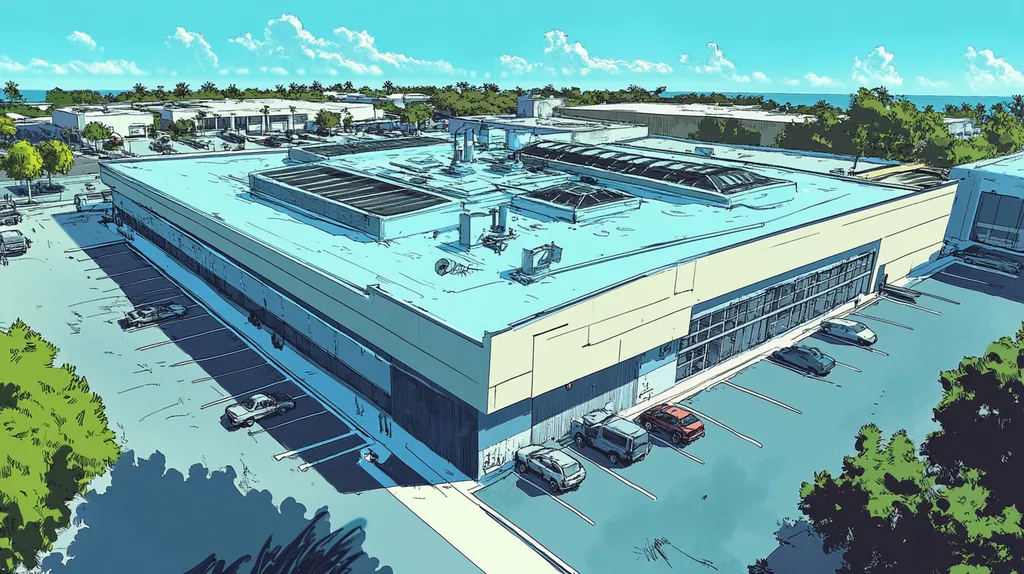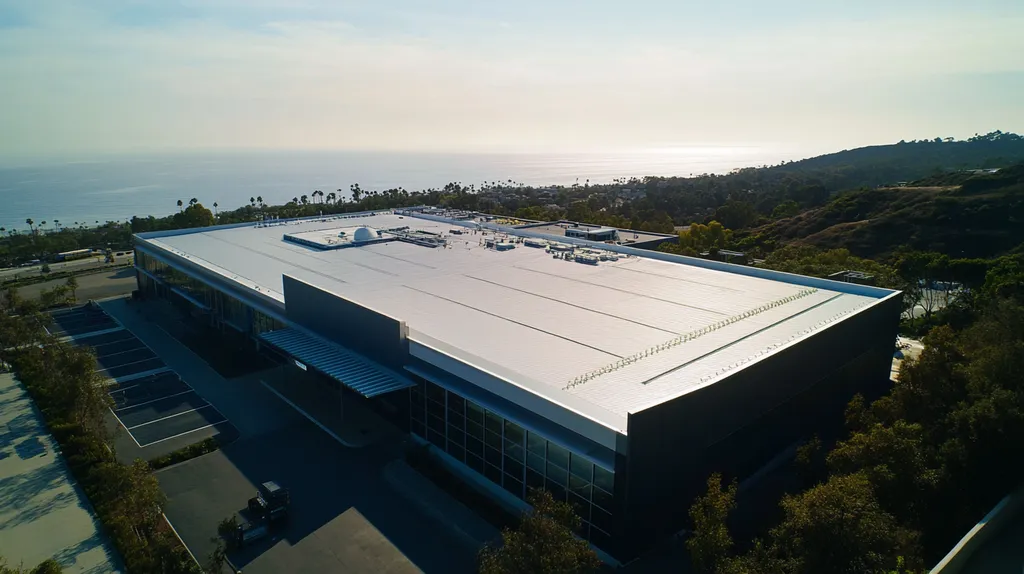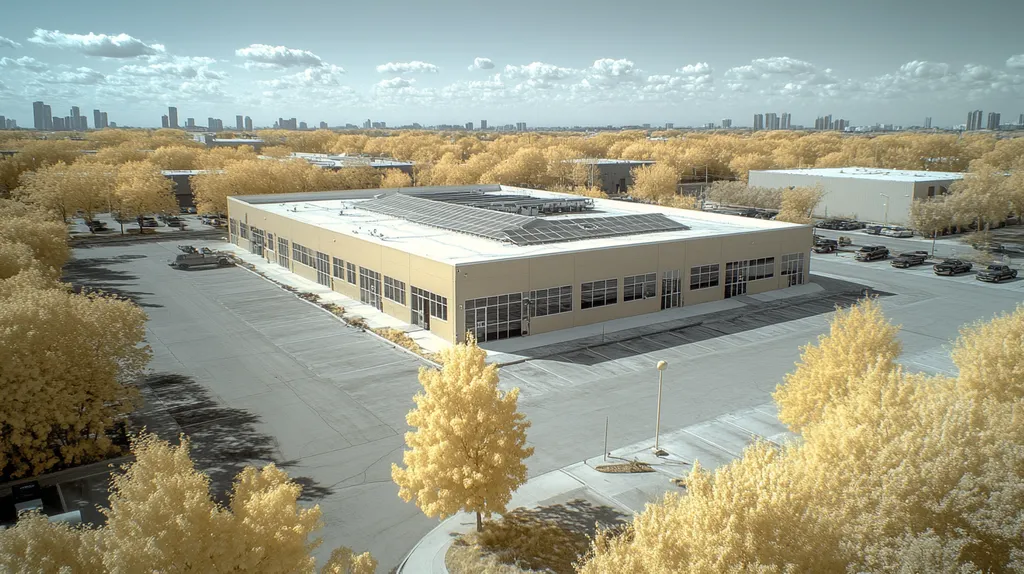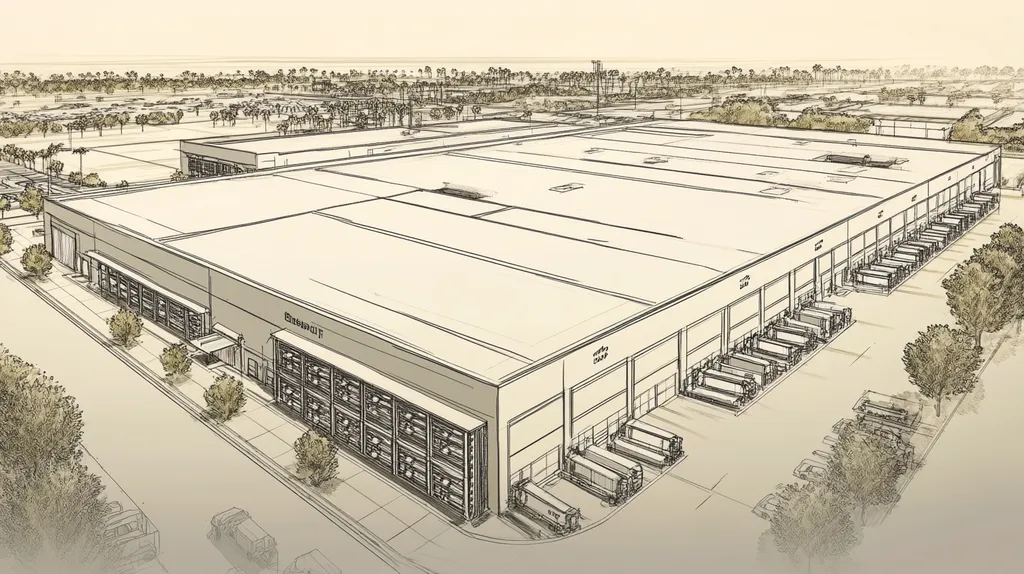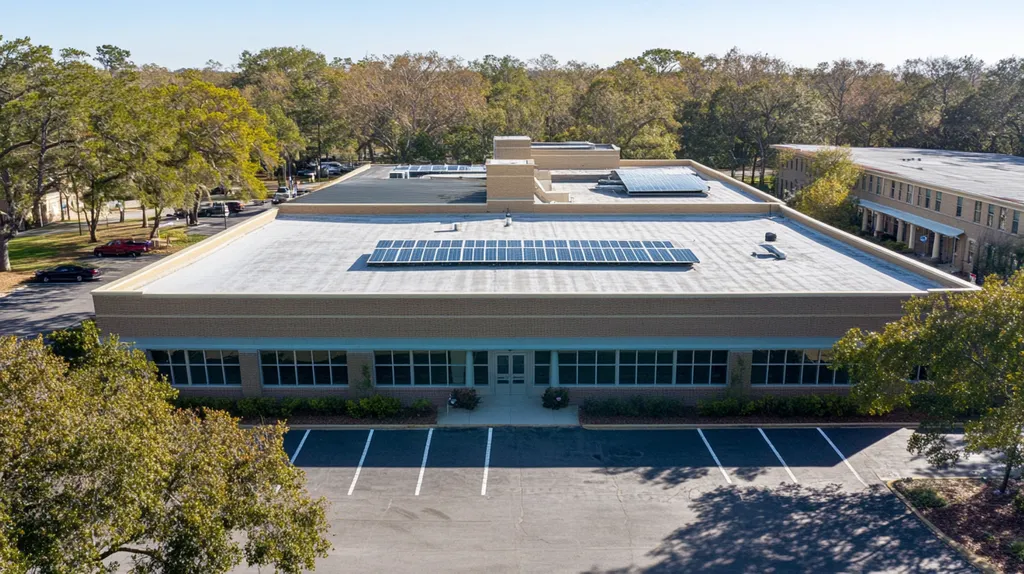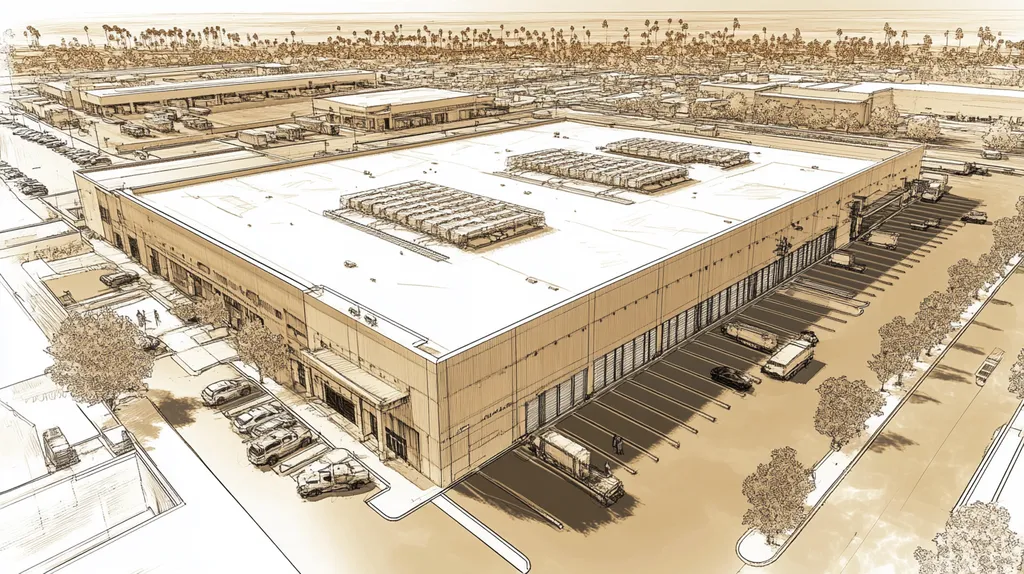Welcome to today’s Battle Royale featuring two roofing heavyweights: “Polyurethane Foam” in the east corner versus “Mineral Wool” in the west!
Tonight’s showdown pits these contenders against each other across six punishing rounds designed to test every aspect of their performance for U-Value Influencing Commercial Roofs.
At stake? Millions in potential costs, decades of building protection, and the critical performance demands of modern commercial and industrial facilities.
Our professional judging panel will evaluate each round on technical merit, real-world performance, and value delivery. After all six rounds, we’ll declare our ultimate champion.
Ladies and gentlemen, facility managers and building owners… it’s time to rumble!
ROUND 1: INITIAL COSTS & INSTALLATION
In today’s competitive commercial real estate market, roofing decisions carry significant financial weight. A building’s roof represents up to 60% of heat loss in winter and heat gain in summer, making insulation choice crucial for operational costs. Understanding the full scope of initial investment versus long-term returns helps decision-makers avoid costly mistakes.
Material Expenses
Raw material costs represent the most visible expense in commercial roofing projects. While mineral wool typically costs $2-4 per square foot, polyurethane foam ranges from $4-7 per square foot, creating significant differences in upfront project budgets.
Polyurethane foam’s higher cost reflects its advanced chemical composition and superior insulating properties. The material creates a seamless barrier that eliminates thermal bridges and provides consistent R-value across the entire roof surface.
Mineral wool offers a more budget-friendly initial investment. Its widespread availability and simpler manufacturing process keep costs lower, though multiple layers may be needed to achieve desired insulation values.
With mineral wool’s clear cost advantage, it takes the lead in material expenses despite polyurethane’s superior performance characteristics.
Installation Complexity
Installation methods directly impact both immediate costs and long-term performance. Polyurethane foam requires specialized equipment and highly trained technicians to ensure proper application, particularly regarding temperature control and layer thickness.
The spray application process of polyurethane foam demands precise environmental conditions and expert handling. However, this method allows for seamless coverage of irregular surfaces and perfect conformity to roof structures.
Mineral wool installation follows more traditional methods familiar to most roofing crews. The material can be cut, shaped, and installed using standard tools, reducing specialized labor requirements and associated costs.
Given its straightforward installation process and lower labor requirements, mineral wool demonstrates clear advantages in installation complexity.
Project Timeline
Project duration affects both direct costs and business disruption. Polyurethane foam installation proceeds rapidly once environmental conditions are suitable, with crews able to cover large areas quickly through spray application.
The continuous application nature of spray foam allows for faster completion of large sections. Additionally, fewer separate layers mean fewer process steps, reducing overall installation time.
Mineral wool installation requires methodical placement of individual boards or batts. While the process is straightforward, it involves more steps including cutting, fitting, and securing multiple layers.
Polyurethane foam’s rapid application and fewer required layers give it a clear advantage in project timeline efficiency.
ROUND 1 RESULTS: TIE
ROUND 2: DURABILITY & LIFESPAN
In commercial roofing, durability and lifespan directly impact a building’s long-term energy efficiency and operational costs. When insulation materials degrade or fail prematurely, U-values can increase by up to 40%, leading to dramatic spikes in heating and cooling expenses. Understanding how different materials maintain their thermal performance over time is crucial for making informed roofing decisions.
Weather Resistance
Weather resistance determines how well insulation maintains its U-value performance through repeated exposure to elements. When calculating U-values, material thermal resistance must account for environmental factors and potential degradation over time. (source: Dow Building Solutions)
Polyurethane foam creates a seamless, waterproof barrier that actively resists moisture penetration. Its closed-cell structure maintains consistent thermal resistance even under extreme temperature fluctuations, preserving initial U-values throughout its service life.
Mineral wool can absorb moisture over time, particularly at joints and seams. While naturally water-resistant, prolonged exposure to moisture can compress the material and reduce its insulating effectiveness, requiring additional maintenance to maintain target U-values.
With superior moisture resistance and thermal stability, polyurethane foam demonstrates a clear ADVANTAGE in weather resistance.
Physical Durability
Physical durability encompasses resistance to mechanical damage, compression, and general wear that can compromise insulation performance. This factor directly influences how well the material maintains its thickness and density, key components of U-value calculations.
Polyurethane foam’s rigid structure resists compression and maintains its dimensional stability. The material’s adhesive properties create a monolithic layer that distributes loads evenly, preventing localized damage that could create thermal bridges.
Mineral wool’s fibrous composition can compress under sustained loads, potentially reducing its effective thickness. While the material rebounds well from short-term compression, repeated stress can permanently affect its insulating capacity.
Given its superior structural integrity and resistance to permanent deformation, polyurethane foam claims another clear ADVANTAGE.
Service Life
Service life evaluation considers how long materials maintain their specified U-values under normal operating conditions. This factor directly affects the total cost of ownership and long-term energy performance.
Polyurethane foam typically maintains its insulating properties for 25-30 years with minimal maintenance. Its chemical stability and resistance to degradation ensure consistent thermal performance throughout its service life.
Mineral wool generally requires replacement or significant maintenance after 15-20 years. Environmental factors and moisture exposure can accelerate degradation, potentially shortening its effective service life.
With significantly longer performance life and lower maintenance requirements, polyurethane foam secures an ADVANTAGE in service life.
ROUND 2 WINNER: Polyurethane Foam
ROUND 3: PERFORMANCE FACTORS
When evaluating commercial roofing systems, performance factors directly impact a building’s energy efficiency and operational costs. The U-factor Method, which considers all assembly components, has become crucial for meeting modern energy codes and achieving optimal building performance across different climate zones. Understanding these factors helps facility managers make informed decisions that affect both immediate comfort and long-term operating expenses.
Thermal Resistance
The U-factor Method is now recognized as the most appropriate approach for determining thermal insulation requirements in high-performance commercial structures. This comprehensive calculation considers all assembly components to ensure compliance with energy conservation codes. (source: Premier Building Systems)
Polyurethane foam delivers exceptional thermal resistance with R-values reaching 6.5 per inch. This superior insulating capability creates a continuous thermal barrier that minimizes heat transfer through the roof assembly.
Mineral wool provides moderate thermal resistance, typically achieving R-values between 3.1 and 4.3 per inch. While effective, it requires greater thickness to match the performance of polyurethane foam.
With nearly double the R-value per inch, polyurethane foam demonstrates clear superiority in thermal resistance.
ADVANTAGE: Polyurethane Foam
Moisture Resistance
Moisture control significantly impacts a roof’s thermal performance and longevity. Water infiltration can dramatically reduce insulation effectiveness and accelerate material degradation.
Polyurethane foam’s closed-cell structure creates an inherent moisture barrier. This characteristic prevents water absorption and maintains consistent thermal performance even under challenging weather conditions.
Mineral wool, while naturally water-resistant, can trap moisture at seams and joints. Over time, this moisture accumulation may compromise insulation effectiveness and require additional maintenance.
The superior moisture resistance of polyurethane foam helps maintain consistent thermal performance throughout its service life.
ADVANTAGE: Polyurethane Foam
Air Infiltration Control
Air leakage can account for up to 40% of a building’s heat loss, making air infiltration control essential for maintaining desired U-values. Effective air barriers prevent both energy waste and moisture-related issues.
Polyurethane foam creates a seamless air barrier upon application. This monolithic coverage eliminates the need for additional air barrier materials and ensures consistent performance across the entire roof surface.
Mineral wool requires separate air barrier installation and careful detailing at joints. These additional components increase complexity and create potential failure points in the system.
The integral air barrier properties of polyurethane foam provide superior air infiltration control.
ADVANTAGE: Polyurethane Foam
ROUND 3 WINNER: Polyurethane Foam
ROUND 4: MAINTENANCE REQUIREMENTS
Proper maintenance directly impacts a commercial roof’s U-value performance and long-term energy efficiency. Studies show that poorly maintained roofing systems can experience up to 40% degradation in thermal resistance within the first five years. Understanding maintenance requirements helps facility managers protect their investment while ensuring consistent thermal performance throughout the roof’s service life.
Inspection Requirements
When calculating U-values, individual material thermal resistances must account for real-world performance factors including moisture penetration and physical degradation. Regular inspections play a crucial role in maintaining designed thermal resistance values across the entire roof assembly. (source: DuPont)
Polyurethane foam systems typically require annual inspections focused on the protective coating layer. The monolithic nature of spray foam makes identifying potential issues straightforward, as problems remain localized rather than spreading beneath multiple layers.
Mineral wool systems demand more frequent inspections, particularly of joints and flashing details where moisture infiltration commonly occurs. These inspections must carefully examine multiple layers for signs of compression, moisture accumulation, or thermal bridging.
With simpler inspection protocols and fewer potential failure points, polyurethane foam demonstrates a clear ADVANTAGE in inspection requirements.
Repair Complexity
The complexity of repairs directly affects how quickly thermal performance issues can be addressed. Simple repairs mean faster resolution of problems that could compromise U-values.
Polyurethane foam repairs typically involve cleaning the affected area and applying new material. This straightforward process maintains system continuity without creating additional thermal bridges or weak points.
Mineral wool repairs often require removing and replacing multiple layers to access damaged sections. This process increases the risk of creating gaps or inconsistencies that can affect thermal performance.
Given its simpler repair procedures and better system integration, polyurethane foam claims another clear ADVANTAGE.
Long-term Maintenance Costs
Maintenance expenses over a roof’s lifetime can significantly impact return on investment. Smart material choices minimize these ongoing costs while maintaining thermal performance.
Polyurethane foam systems generally require minimal maintenance beyond periodic recoating every 10-15 years. The material’s resistance to moisture and physical damage reduces the frequency of repairs and associated costs.
Mineral wool systems often incur higher maintenance costs due to more frequent inspections, repairs, and potential material replacement. Water damage and compression can necessitate extensive repairs to maintain thermal performance.
With lower lifetime maintenance requirements and costs, polyurethane foam establishes a clear ADVANTAGE.
ROUND 4 WINNER: Polyurethane Foam
ROUND 5: SUSTAINABILITY CREDENTIALS
In today’s commercial construction landscape, sustainability credentials have become critical differentiators affecting both environmental impact and bottom-line performance. Studies show that buildings with sustainable roofing systems can reduce energy costs by up to 30% while significantly lowering their carbon footprint. Understanding how roofing material choices influence these outcomes helps property owners make decisions that benefit both their operations and the environment.
Energy Efficiency
When evaluating roofing materials for energy efficiency, thermal resistance calculations must consider each component’s individual performance characteristics. The interaction between materials directly affects overall U-values and long-term energy consumption. (source: DuPont)
Polyurethane foam creates a continuous insulation layer that eliminates thermal bridges. Its superior R-value per inch means thinner applications can achieve better thermal performance, reducing material usage while maximizing energy efficiency.
Mineral wool requires greater thickness to achieve comparable R-values. While effective, this increased material volume can impact overall roof loading and may require additional structural considerations.
Given its superior thermal performance with less material, polyurethane foam demonstrates a clear ADVANTAGE in energy efficiency.
Resource Utilization
Resource utilization encompasses both raw material consumption and the potential for recycling at end-of-life. This factor significantly impacts a roofing system’s overall environmental footprint.
Polyurethane foam primarily relies on petrochemical resources, though some manufacturers now incorporate bio-based materials. While the finished product offers excellent performance, its production process remains resource-intensive.
Mineral wool utilizes abundant natural materials and incorporates significant recycled content. Its manufacturing process requires less energy than foam production, and the material can be recycled at end-of-life.
With superior recyclability and lower resource intensity, mineral wool claims a clear ADVANTAGE.
Environmental Impact
Environmental impact assessment considers factors from manufacturing emissions to disposal implications. This comprehensive view helps property owners understand the true ecological cost of their roofing choices.
Polyurethane foam installation produces minimal waste since materials are mixed on-site. However, the chemical nature of the product raises concerns about potential environmental effects during production and disposal.
Mineral wool’s natural composition results in lower environmental impact during manufacturing and disposal. Its inert nature prevents chemical leaching, while its durability reduces replacement frequency.
Based on lower environmental impact throughout its lifecycle, mineral wool establishes a clear ADVANTAGE.
ROUND 5 WINNER: MINERAL WOOL
ROUND 6: SPECIALIZED APPLICATIONS
Commercial roofing requirements vary dramatically across different building types and operational environments. From data centers demanding precise temperature control to manufacturing facilities requiring exceptional chemical resistance, specialized applications present unique challenges for insulation materials.
The wrong material choice in these situations can lead to premature system failure, compromised operations, and significantly increased energy costs. Understanding how different insulation materials perform under specialized conditions is crucial for long-term success.
Temperature-Critical Environments
Buildings housing sensitive equipment or processes require exceptionally stable internal temperatures. Healthcare facilities, data centers, and pharmaceutical manufacturing plants all depend on consistent thermal performance to maintain operations.
Polyurethane foam’s superior thermal resistance and seamless application create an uninterrupted barrier against temperature fluctuations. Its closed-cell structure maintains consistent performance even under extreme temperature differentials, making it ideal for critical environments.
Mineral wool’s thermal performance can vary at joints and seams, creating potential weak points in temperature-critical applications. While effective in moderate conditions, it may struggle to maintain the precise thermal control required in specialized environments.
For applications requiring strict temperature control, polyurethane foam demonstrates clear ADVANTAGE.
Chemical Exposure Resistance
Industrial facilities, laboratories, and manufacturing plants often expose roofing systems to harsh chemicals through ventilation systems or atmospheric conditions. These environments demand materials that maintain their structural integrity and insulating properties despite chemical exposure.
Polyurethane foam’s chemical composition provides excellent resistance to most industrial chemicals and atmospheric pollutants. Its non-reactive nature helps maintain consistent thermal performance even in challenging chemical environments.
Mineral wool can degrade when exposed to certain chemicals, potentially compromising its insulating properties. This vulnerability may require additional protective measures or more frequent replacement in chemical-exposure environments.
Given its superior chemical resistance properties, polyurethane foam establishes another clear ADVANTAGE.
Structural Loading Requirements
Many specialized applications involve unique structural considerations, from rooftop equipment placement to variable load distributions. The insulation material’s impact on overall roof loading can significantly affect building design and operations.
Mineral wool’s relatively light weight and high compressive strength make it ideal for applications requiring minimal structural impact. Its ability to support varied load patterns without compromising performance offers excellent flexibility in equipment placement.
Polyurethane foam, while providing good load distribution, may require additional structural considerations due to its higher density. This can limit options for rooftop equipment placement or require enhanced structural support.
For specialized applications with critical loading requirements, mineral wool claims the ADVANTAGE.
ROUND 6 WINNER: TIE
AND THE WINNER IS…
After six grueling rounds of technical evaluation, we have our verdict…
Ladies and gentlemen, with decisive victories in Rounds 2, 3, and 4, plus strong showings throughout the match – your new U-Value Champion is POLYURETHANE FOAM!
This heavyweight contender dominated the competition with superior thermal resistance, exceptional durability, and minimal maintenance requirements. Its seamless application and outstanding moisture control capabilities proved devastating advantages in the championship rounds.
But don’t count Mineral Wool out completely! This seasoned veteran still packs a mighty punch in sustainability credentials and remains a strong contender for projects where initial cost control and environmental impact take center stage.
IMPORTANT NOTICE: While tonight’s match showcased these materials’ general performance characteristics, every building presents unique challenges. Local climate conditions, structural requirements, and specific facility operations all impact material selection. Property owners should consult qualified roofing professionals who can evaluate their particular situation before making final decisions.
Remember, champions – in the high-stakes arena of commercial roofing, victory doesn’t just come from picking the strongest contender. It comes from selecting the right fighter for YOUR specific battle. Choose wisely, and may your roof reign supreme!
FREQUENTLY ASKED QUESTIONS
Q. What are the initial costs of a commercial roof system?
A. The initial costs vary significantly between materials. Mineral wool offers a lower starting price, typically ranging from $2-4 per square foot. In contrast, polyurethane foam tends to cost between $4-7 per square foot due to its superior insulating properties and advanced manufacturing process.
Q. How do durability and lifespan influence a commercial roof?
A. Durability and lifespan are critical for long-term energy efficiency. Polyurethane foam can last 25-30 years with minimal maintenance, while mineral wool generally requires replacement or significant upkeep after 15-20 years due to moisture vulnerability, impacting operational costs significantly.
Q. What performance factors should commercial roof owners consider?
A. Key performance factors include thermal resistance, moisture control, and air infiltration. Polyurethane foam offers excellent thermal resistance and moisture barriers, while mineral wool requires more layers to achieve similar performance, making foam a superior choice for energy efficiency.
Q. How important is maintenance for a commercial roof system?
A. Regular maintenance is essential to preserving U-value performance and energy efficiency. Polyurethane foam requires annual inspections, while mineral wool needs more frequent checks, especially at seams, making foam easier to manage and less prone to significant degradation.
Q. How does sustainability impact commercial roofing choices?
A. Sustainability credentials play a vital role in reducing energy costs and environmental impact. Polyurethane foam offers high energy efficiency but is resource-intensive, whereas mineral wool includes significant recycled content and lower manufacturing energy demands, appealing to eco-conscious property owners.
Q. What specialized applications exist for commercial roofing?
A. Specialized applications require careful material selection based on their unique needs. For example, polyurethane foam excels in temperature-critical environments like data centers, while mineral wool may be better for structures with diverse loading conditions, offering flexibility without excessive weight.
Q. How do roofing warranties differ between commercial roof materials?
A. Warranties vary based on materials and manufacturers. Polyurethane foam systems often come with longer warranties due to their robust performance and longevity, while mineral wool warranties can fluctuate significantly, often reflecting shorter expected lifespan and requiring specific maintenance protocols.

